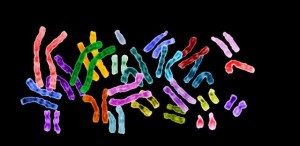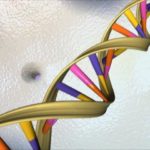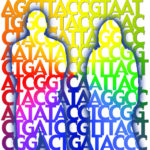Clinical Whole Genome Sequencing: Not Quite Ready for Prime Time?
When I posted “Why I Don’t Want to Know My Genome Sequence here in November 2012, I got a lot of grief. Still do.
Now researchers at Stanford University have put whole genome sequencing (WGS) of genetically healthy folks to a limited but telling test, and the results appear in this week’s Journal of the American Medical Association. (My version’s at Medscape.)
I can’t improve on the clear and compelling language of the JAMA article:
“In this exploratory study of 12 volunteer adults, the use of WGS was associated with incomplete coverage of inherited disease genes, low reproducibility of genetic variation with the highest potential clinical effects, and uncertainty about clinically reportable WGS findings.”
I’m not surprised. DNA science, any science, is by nature uncertain.
WGS can identify certain well-studied “actionable” gene variants, such as those that raise risk of cancers and clotting disorders, and drug sensitivity genes, although all that information may be overkill. Both exome (just the protein-encoding part, 1-3% or so of the genome) and WGS have solved medical mysteries in selected populations: babies in neonatal intensive care units, kids with developmental delay, and people with undiagnosed diseases.
THE STANFORD DOZEN
At Stanford, the dozen presumably healthy adults met with a genetic counselor and gave blood, from which the white cells yielded DNA. The paper doesn’t go into how the participants were recruited, whether they had consecutive clinic appointments, were hovering near a vending machine, or were part of a zumba class.
Then two teams of experts scrutinized the DNA data.
First, the genome whisperers (three genetic counselors, three physician-informaticists, and one molecular pathologist) used software to look for clues to health-related genes (things like variant frequencies, function predicted from structure, and evolutionary conservation). They scoured the medical literature and a staggering number of gene variants listed in databases, such as those of the Human Gene Mutation Database (HGMD) and the American College of Medical Genetics and Genomics (ACMG).
This meticulous matching of gene variant (aka allele or mutation) to function, the figuring out or finding of what genes do, is called annotation. It’s the difficult, time-consuming part that doesn’t make it into genohype. A genome is sequenced – and then what? Genetic counselors and other genetics experts are paid to hunt down what the variants do and could mean for a person’s health.
Once the genome whisperers applied their criteria to identify DNA sequences that might be meaningful, a team of physicians turned their suggestions into medical advice – tests and referrals, on average three per participant. And just as the 12 people were average Joes and Jills, three of the docs were in primary care, two of whom hadn’t dealt with genetics or genomics before, and the other two were medical geneticists, although all were academics. The study also compared two sequencing platforms – Illumina for all, Complete Genomics for some. (Disclosure: I’ve accepted chocolate at meetings from both companies.)
 WHAT THE GENOME WHISPERERS FOUND
WHAT THE GENOME WHISPERERS FOUND
Here are some interesting findings:
• The sequencing missed 10 to 19% of known inherited disease genes. This is due to incomplete coverage. To derive a genome sequence, many copies are overlapped. The more copies, the more of the genome is represented in the derived sequence. Sequencing in this study missed some genome parts. It happens. But if it happens in the clinic, it can mean a false negative.
• Both platforms approached 100% accuracy in detecting genotypes already known to cause disease. It’s easier to find a unicorn if you know what one looks like.
• The platforms were much better at detecting the well-known single nucleotide polymorphisms (SNPs) than copy number variants – tiny deletions and duplications. That’s because a repeat of a sequence may only register once.
• The genome whisperers downgraded the predicted danger of some gene variants from previous reports. A mutation can be more deadly in one population than in another – such as the BRCA genes. And they didn’t always agree on whether a particular gene variant would cause disease, nor about which findings should go on to the doc team.
WHAT DID PARTICIPANTS LEARN?
Each one had 100 or so “novel and rare genetic variants,” and 1 to 7 “personal disease-risk findings” that could, theoretically, harm health. I hate to say it, but they probably could have gotten some of this info from 23andme’s exome sequencing before the FDA silenced them, which went for $99 a few years ago.
Of the dozen participants, only one got an “actionable” report – she had a BRCA mutation and had surgery after learning of the result, which was very unexpected because she had no family history of cancer.
 What did all this info cost per patient? For sequencing plus interpretation about $15,000, plus another $1,000 for initial follow-up consults and tests, which sounds a little too rosy.
What did all this info cost per patient? For sequencing plus interpretation about $15,000, plus another $1,000 for initial follow-up consults and tests, which sounds a little too rosy.
Whether that price tag is ultimately cost-effective or not of course depends on circumstance. If it identifies a rare disease, avoiding perhaps years of testing, then yes. But if it turns up a tendency to clot due to inheriting factor V Leiden, a genetic counselor could have caught that with an informative family health history and tests for mutations in blood clotting genes.
A PROBLEM THAT WILL VANISH WITH TIME
I’m not surprised that looking at the genomes of a dozen healthy people didn’t provide a crystal ball to predict their medical futures for a simple reason. The human genome is so complex, with instructions buried in layers of molecular language, that the very idea of going from sequence to diagnosis may be flawed, at least until we can work out all possible gene-gene interactions, against the backdrop of the environment. But this limitation is itself limited. It will go away with time, as more and more human genomes are subjected to the sequencers and the annotators, who then whisper to the clinicians what, exactly, to impart to a patient.
 And that’s why I will, one day, have my genome sequenced. But I’ll do it anonymously, so that my personal collection of variants can be considered along with everyone else’s to better inform clinicians on what hidden future illnesses their patients might bring with them to the exam room. If everyone does it, perhaps we won’t have to worry about privacy, for we all have genomic glitches. Decades ago geneticists called this fact “genetic load” — we all have our mutations. Now we can identify the glitches.
And that’s why I will, one day, have my genome sequenced. But I’ll do it anonymously, so that my personal collection of variants can be considered along with everyone else’s to better inform clinicians on what hidden future illnesses their patients might bring with them to the exam room. If everyone does it, perhaps we won’t have to worry about privacy, for we all have genomic glitches. Decades ago geneticists called this fact “genetic load” — we all have our mutations. Now we can identify the glitches.
But even when we have complete genome sequences for millions of us, something I predict will be true within five years, genotype will not always predict phenotype. For DNA is not destiny.

[…] Clinical Whole Genome Sequencing: Not Quite Ready for Prime Time?[Via DNA Science Blog] […]
[…] these findings don’t discourage Ricki […]
[…] Clinical Whole Genome Sequencing: Not Quite Ready for Prime Time? — (Via AH.) […]
I took advantage of that 23andMe exome trial ($999, not $99), and did indeed get a fairly detailed (but probably computer-generated) report with the numbers of novel and rare variants, with a brief analysis of each one that altered a protein-coding sequence.
[…] Clinical Whole Genome Sequencing: Not Quite Ready for Prime Time? […]